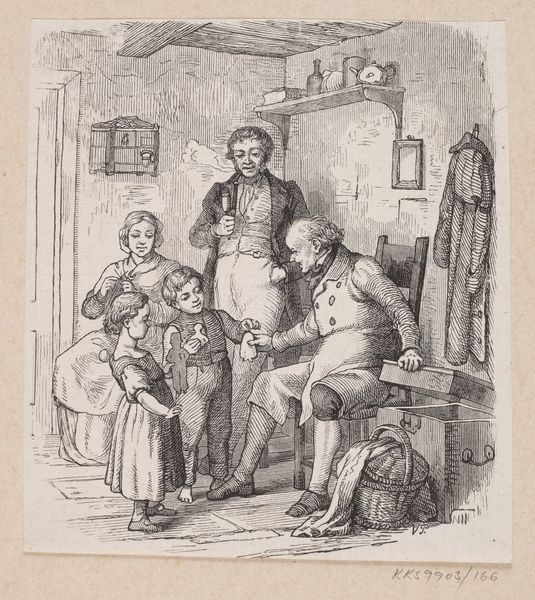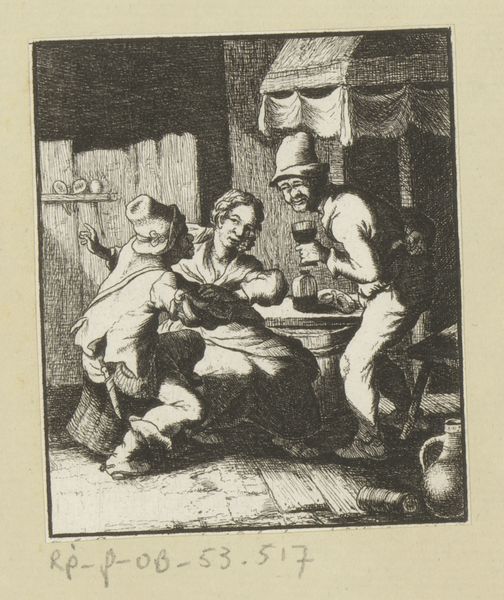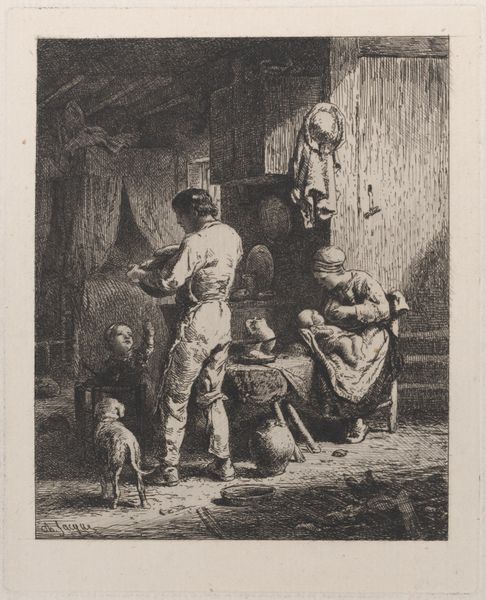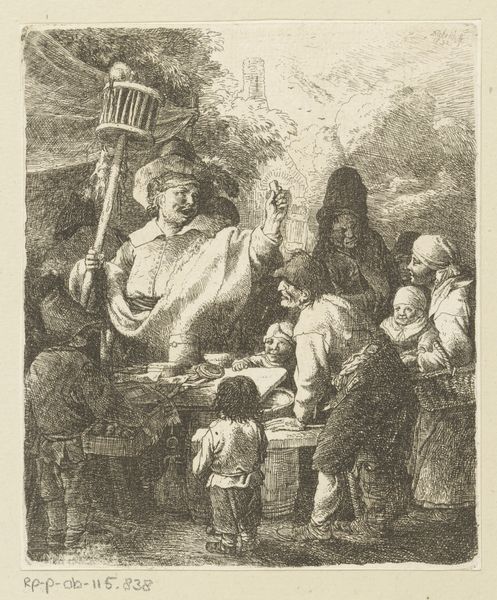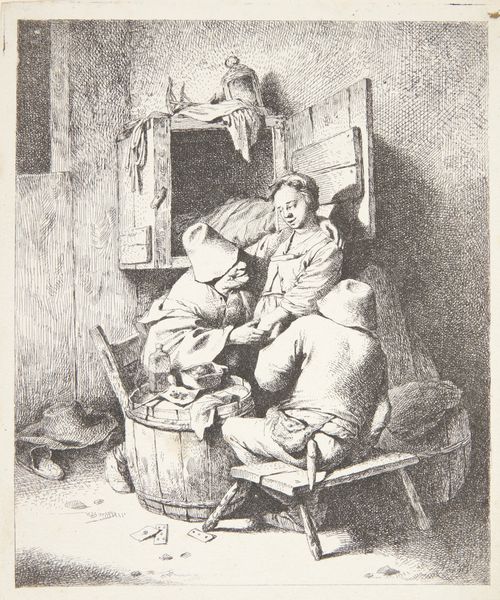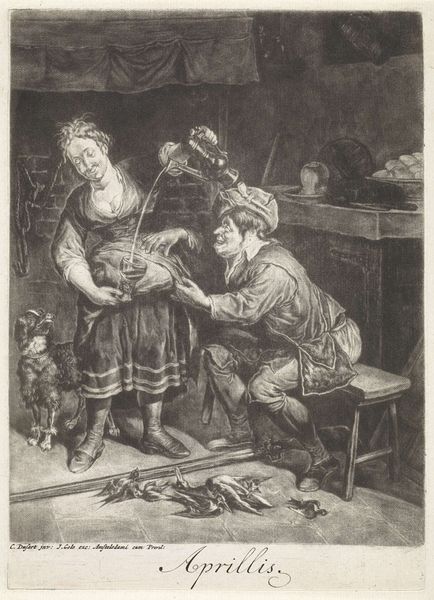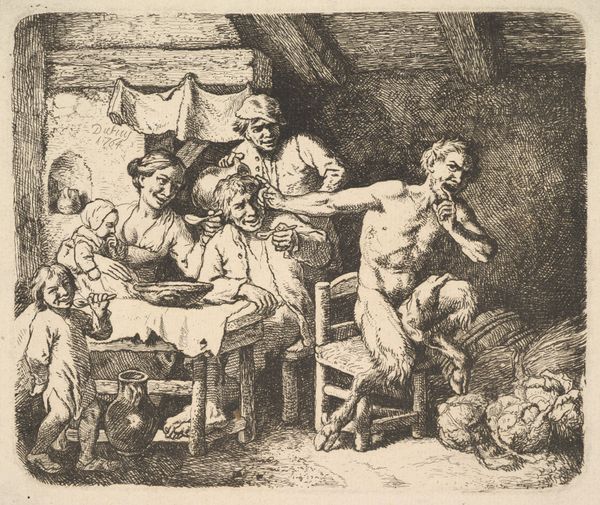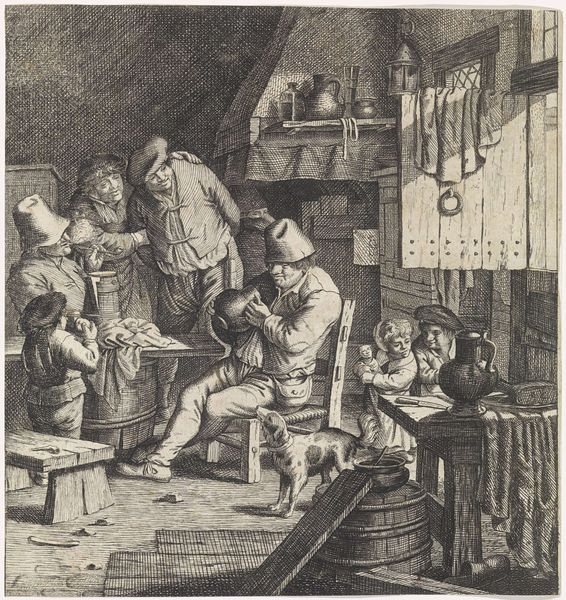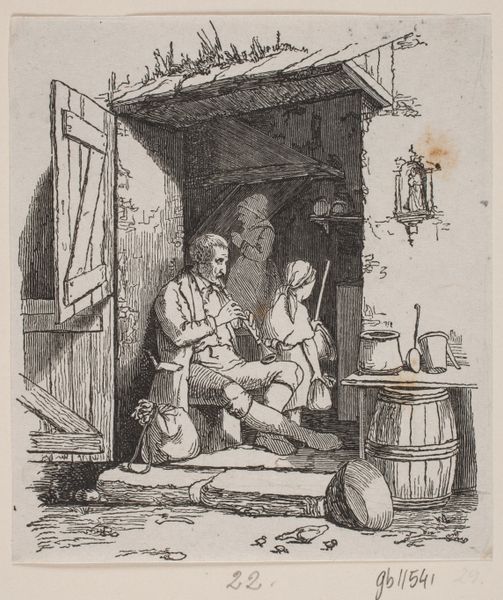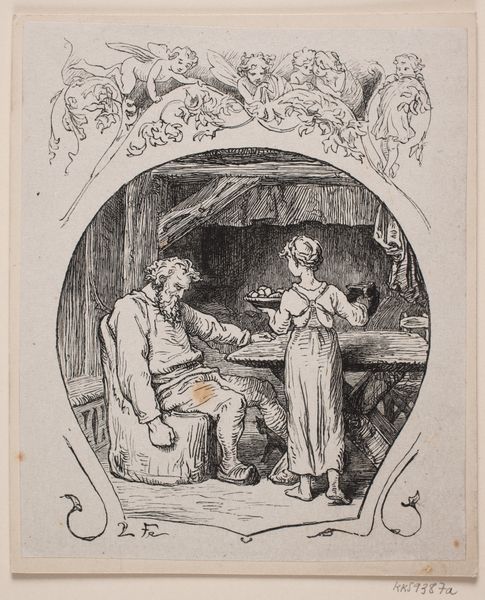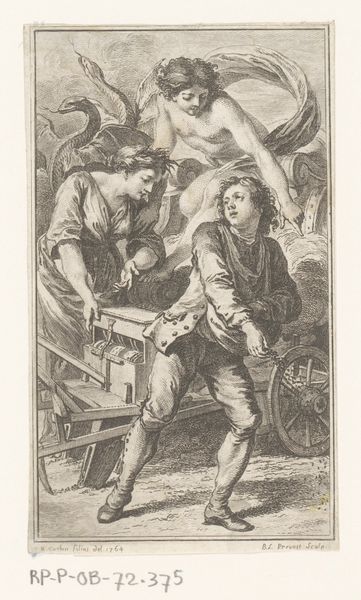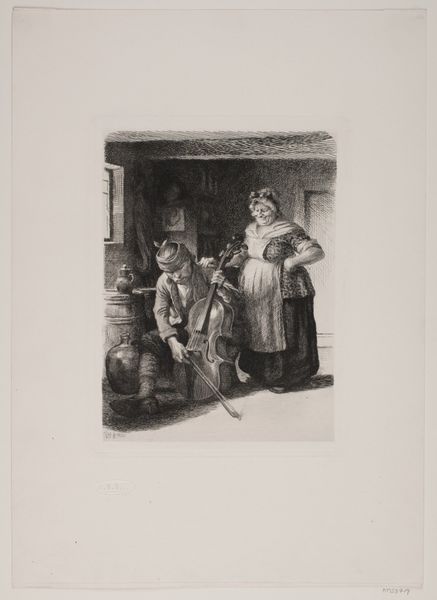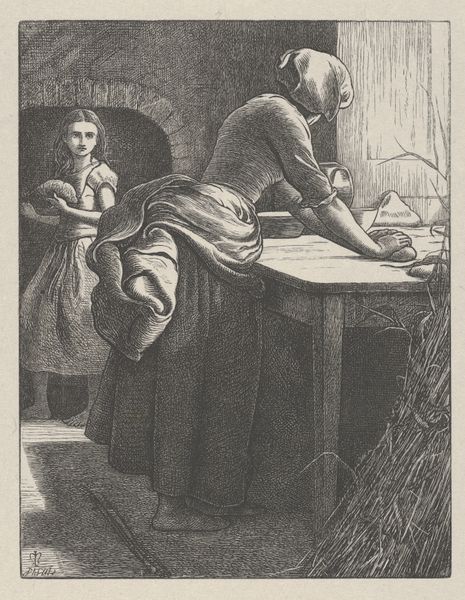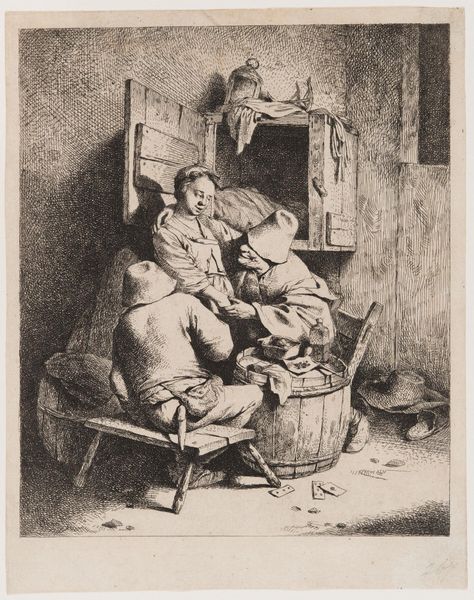
Dimensions: Sheet: 8 3/4 x 6 1/16 in. (22.3 x 15.4 cm)
Copyright: Public Domain
Curator: "Enjoying Domestic Happiness," an engraving by Robert Blyth from 1779, presents us with a scene of what seems like everyday life. Editor: Well, "happiness" might be a bit of an overstatement from the looks of it! The woman has this melancholic air; she looks troubled. It seems more staged than genuinely happy. Curator: Notice how Blyth frames the scene, with objects strategically placed—armor, a shepherd's crook—almost like props in a play. Aren't those reminders of other possible lives, maybe unfulfilled ones? Editor: Exactly! The setting isn't a grand parlor but something closer to a garret. You’ve got this mix of the rustic and the martial looming over the domestic scene. I'm intrigued by that tension; it speaks volumes about societal expectations and maybe the burdens of domesticity in that era. Curator: Consider the details, such as the clothing: are they practical, suitable to labour, or more allegorical and symbolic, suggesting something more classical in influence, like the neo-classical style making waves at the time? Are these allusions to different kinds of narratives? Editor: It feels self-aware, a constructed image meant to comment on an ideal rather than reflect reality. It's interesting that this image was published in 1779, a period marked by colonial tensions and revolutionary fervor. Curator: It becomes evident when one looks at the broader social commentary, particularly relating to shifting roles. The choice of "domestic happiness" as a subject would not have been innocent—it could very well challenge conventional assumptions of womanhood. What could this family grouping represent to its original audience? Editor: It's less a celebration of the simple life, and more a staged meditation on it—one charged with undertones of social critique that certainly provides fodder for interpretation and debate. So much of it depends on how you parse the symbols. Curator: Indeed, a piece to turn over in the mind and feel how symbols reveal memory. Editor: A reminder that art can both reflect and shape societal discourse, creating conversations that extend beyond the canvas or the page.
Comments
No comments
Be the first to comment and join the conversation on the ultimate creative platform.
